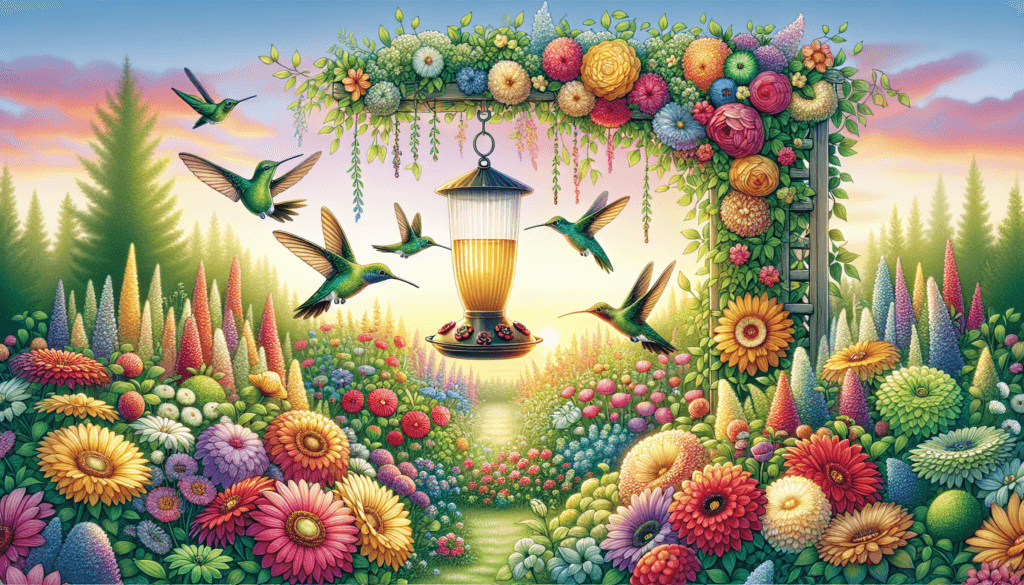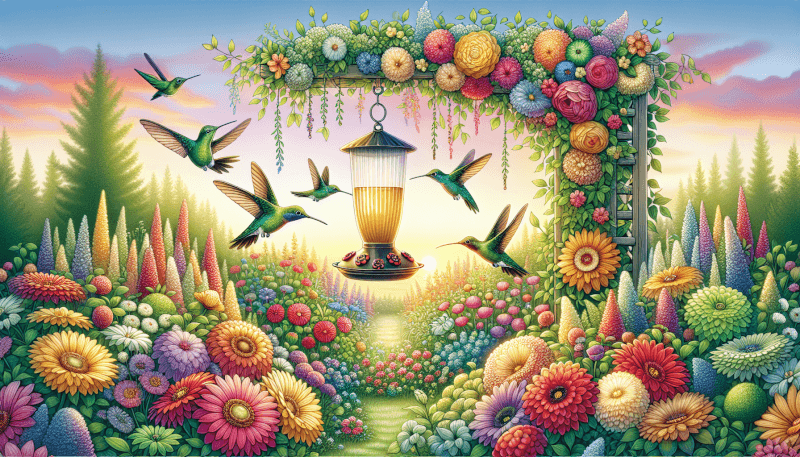You’ve always admired the beauty and grace of hummingbirds, and now you’ve decided to create a DIY garden that attracts these delightful creatures. But where do you begin? In this article, we will explore the best ways to make your garden a haven for hummingbirds. Get ready to learn about the plants, feeders, water sources, and other simple tips that will entice these tiny birds to visit your garden and stay awhile. With a few easy changes, you’ll have your own personal hummingbird sanctuary right in your backyard. So let’s dive in and discover the secrets to attracting these enchanting creatures to your DIY garden.
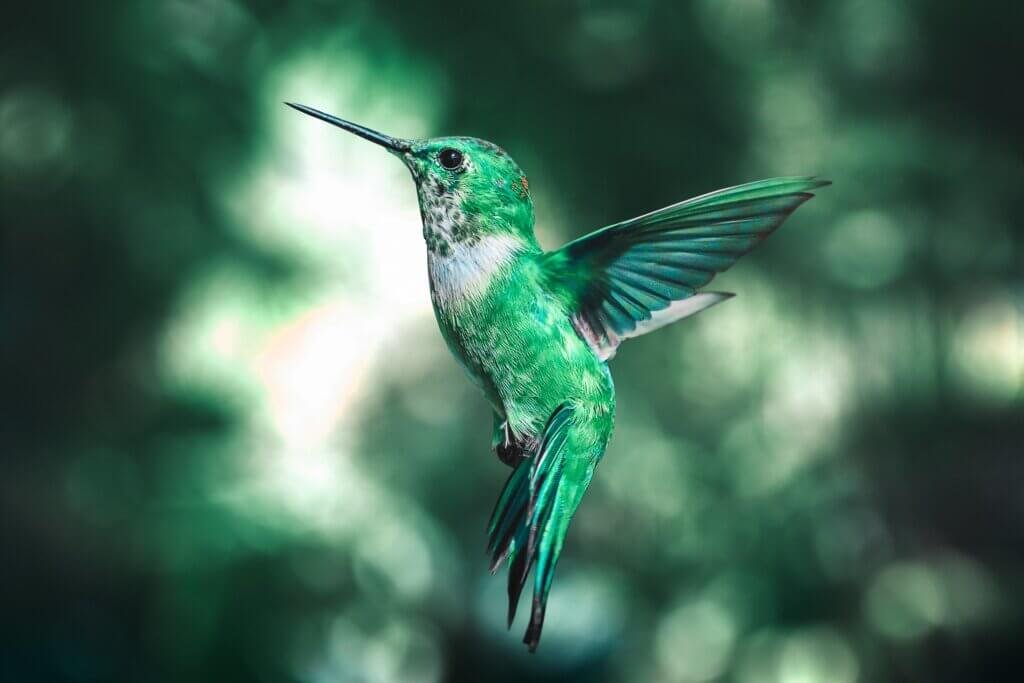
Choosing the Right Plants
When it comes to attracting hummingbirds to your DIY garden, choosing the right plants is crucial. Opting for native flowering plants is an excellent starting point. Native plants not only provide a sense of familiarity to hummingbirds but also offer ample nectar sources they are naturally drawn to. These plants have evolved alongside hummingbirds and have developed a mutualistic relationship, making them an ideal choice. Some popular native flowering plants that attract hummingbirds include cardinal flower (Lobelia cardinalis), bee balm (Monarda), and columbine (Aquilegia).
In addition to native plants, opt for flowers with brightly colored blooms. Hummingbirds are visually oriented creatures and are particularly attracted to vibrant hues. Deep red, orange, and purple flowers are among their favorites. Some examples of brightly colored flowering plants that are irresistible to hummingbirds include trumpet vine (Campsis radicans), scarlet sage (Salvia coccinea), and penstemon (Penstemon digitalis).
Another feature to consider when selecting plants is the shape of their blooms. Tubular-shaped flowers are especially appealing to hummingbirds. These flowers perfectly accommodate their long, slender bills and allow them to extract nectar easily. Some popular tubular-shaped plants that attract hummingbirds include bee balm (Monarda), cardinal flower (Lobelia cardinalis), and trumpet creeper (Campsis radicans).
Providing Adequate Nectar
While planting the right flowers attracts hummingbirds, ensuring an adequate nectar supply is equally important. One way to provide nectar is by using hummingbird feeders. These feeders are designed specifically for hummingbirds and feature small feeding ports that simulate tubular flowers. Make sure to choose feeders that are easy to clean and refill. Place them in visible locations throughout your garden, ensuring they are easily accessible for both hummingbirds and you.
If you prefer a DIY approach, creating homemade nectar is a fantastic option. To make your own nectar, mix four parts water with one part white granulated sugar. Boil the mixture and let it cool before filling your feeders. Avoid using honey, brown sugar, or artificial sweeteners, as they can be harmful to hummingbirds.
Remember to maintain clean feeders to provide a safe and healthy environment for hummingbirds. Regularly clean feeders with hot water and mild soap, rinsing them thoroughly to remove any residue. Replace the nectar every three to five days or sooner if it becomes cloudy or moldy. Regular maintenance and cleanliness will help attract hummingbirds and keep them coming back to your garden.
Arranging Plants Strategically
Arranging plants strategically in your garden not only enhances its aesthetic appeal but also increases its attractiveness to hummingbirds. Grouping plants together that have similar colors and shapes can create a visually appealing display that lures hummingbirds in. When plants of the same species are grouped, hummingbirds find it easier to locate nectar sources, making feeding more efficient for them.
Creating layers of heights by planting both tall and short plants adds depth and complexity to your garden, further attracting hummingbirds. Tall plants, such as hollyhocks (Alcea rosea) or Russian sage (Perovskia atriplicifolia), provide perching spots for hummingbirds and act as prominent landmarks for them. Meanwhile, shorter plants, like salvia (Salvia nemorosa) or zinnias (Zinnia elegans), can serve as abundant nectar sources close to the ground. This layered arrangement appeals to hummingbirds’ natural foraging behavior, increasing the chances of them visiting your garden.
Planting in clusters is another effective strategy for attracting hummingbirds. By planting multiple specimens of the same species close together, you create a concentrated source of nectar. Hummingbirds are known to be territorial and will fiercely guard their feeding grounds. Providing abundant nectar in a clustered arrangement not only entices them to your garden but also encourages repeated visits as they establish their territory.
Adding Water Features
In addition to providing nectar-rich flowers, incorporating water features into your DIY garden is a surefire way to attract hummingbirds. Hummingbirds not only need nectar to fuel their energetic flight but also require clean and fresh water for bathing and drinking. With a few simple additions, you can create an oasis that entices hummingbirds and provides them with the water they need.
Installing a birdbath is an excellent way to provide a water source for hummingbirds. Opt for a shallow birdbath with a rough surface to ensure secure footing for hummingbirds. Place pebbles or stones in the water to provide perching spots and prevent drowning. Remember to keep the water fresh and change it regularly to prevent the growth of algae and bacteria.
Including a misting system in your garden adds an additional element of attraction. Hummingbirds love flying through gentle mists of water, especially on hot days. Misters can be easily attached to a tree branch or pergola, creating a fine mist that provides a refreshing experience for hummingbirds. Pair the misting system with nearby nectar-rich flowers to create an irresistible combination.
Setting up a dripper is another straightforward way to attract hummingbirds. Drippers simulate the sound of falling raindrops, which hummingbirds associate with fresh water sources. Attach a dripper to a tree limb and adjust its flow to create a gentle and continuous dripping sound. Combined with colorful flowers, the sound of a dripper will catch the attention of hummingbirds and guide them to your garden oasis.
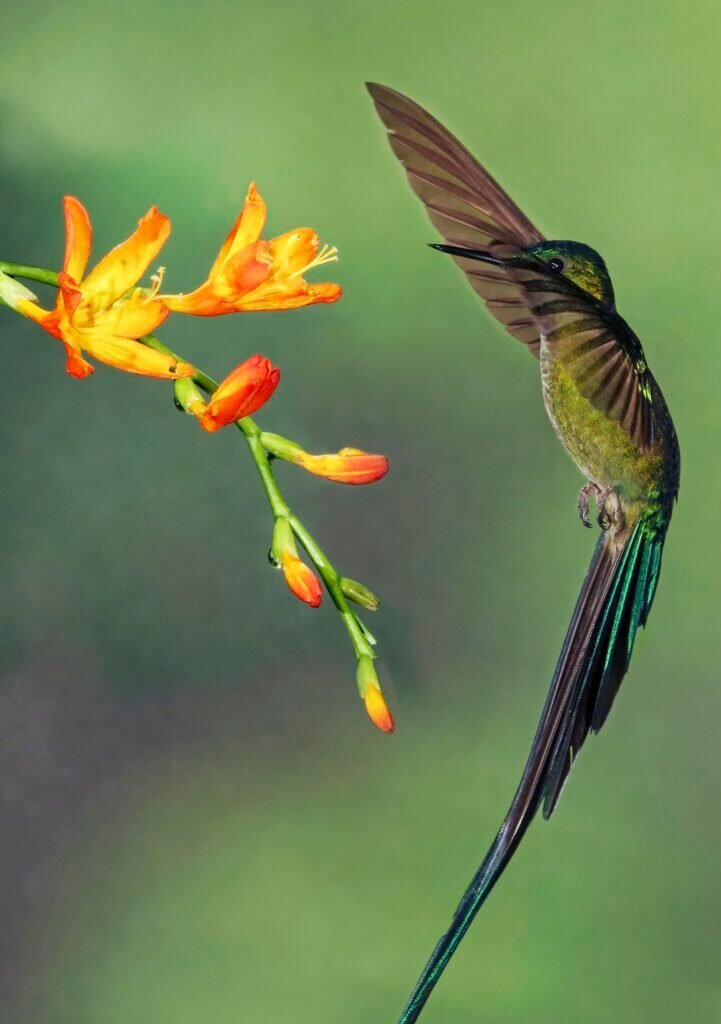
Providing Perches and Shelter
To make your DIY garden even more appealing to hummingbirds, ensure you provide suitable perches and shelter for them. Including tall trees or shrubs in your garden serves as natural perching spots for hummingbirds to rest and survey their surroundings. Trees like maple (Acer), pine (Pinus), or oak (Quercus) provide sturdy perches and also create shade, making your garden a comfortable and inviting space for these tiny birds.
In addition to living plants, dead branches or sticks can serve as valuable perches and shelters for hummingbirds. Leave some dead branches in your garden, ideally in visible locations, to provide these birds with resting spots. Dead branches are also useful for hummingbird courtship displays, where males perform their impressive aerial antics to attract females. By incorporating dead branches, you not only provide perching spots but also enhance the natural appeal of your garden.
Planting vines and climbers in your garden adds another layer of shelter and attracts hummingbirds in multiple ways. Vines like trumpet vine (Campsis radicans), clematis (Clematis), or honeysuckle (Lonicera) provide excellent cover and nesting options for hummingbirds. The dense foliage offers protection from predators and creates a secluded space ideal for nesting and rearing young. Hummingbirds are naturally drawn to such areas and will actively seek them out when looking for a home.
Avoiding Harmful Chemicals
To create a safe and healthy environment for hummingbirds, it is essential to avoid harmful chemicals in your garden. Restricting pesticide use is crucial, as exposure to pesticides can be toxic to hummingbirds and other beneficial insects. If pest issues arise, consider using organic pest control methods such as companion planting, hand-picking pests, or introducing natural predators. This way, you can maintain a thriving garden without harming the delicate balance of nature.
Similarly, opt for organic fertilizers and soil amendments instead of chemical-based products in your DIY garden. Chemical fertilizers and herbicides not only harm the environment but can also have adverse effects on the plants you want to attract hummingbirds with. Organic alternatives promote healthy plant growth and contribute to a more sustainable gardening practice.
Avoiding herbicides and insecticides altogether is another important step. While these chemicals may target specific pests or weeds, they can have unintended consequences for hummingbirds. These birds rely on insects for protein and other essential nutrients, so even small traces of insecticides can harm them. Opt for natural pest control solutions or consider using physical methods to control weeds, such as hand-pulling or mulching.
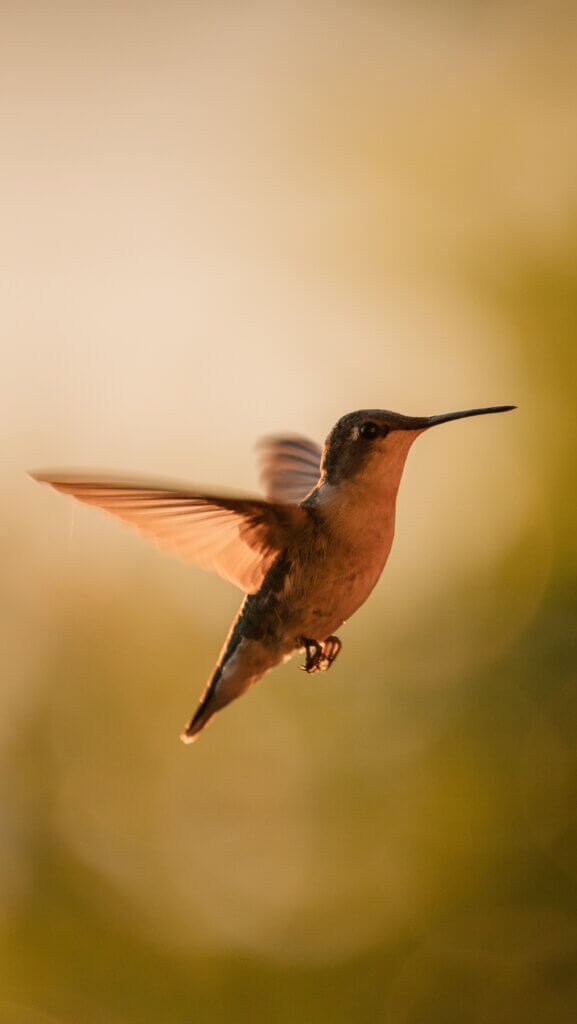
Maintaining a Clean Environment
To keep hummingbirds visiting your garden, it is vital to maintain a clean environment. Removing dead flowers, also known as deadheading, not only enhances the appearance of your garden but also prevents the growth of mold and fungal diseases. Regularly check your flowers and remove any spent blooms to ensure your garden stays attractive to hummingbirds.
Clean feeders are essential for hummingbird health and well-being. Regularly clean your feeders with hot water and mild soap, scrubbing off any residue or mold. Rinse them thoroughly before refilling with fresh nectar. If you notice any signs of mold or contamination, replace the feeder immediately to prevent harm to visiting hummingbirds.
Alongside feeders, ensuring water sources are clean is equally important. Regularly clean and refill birdbaths to prevent the growth of algae and bacteria. Use a scrub brush to remove any debris or slime, and rinse thoroughly with clean water. Changing the water every few days prevents stagnation and ensures hummingbirds have access to fresh and safe drinking and bathing water.
Creating a Year-Round Habitat
To attract hummingbirds to your DIY garden year-round, it is essential to consider their needs throughout each season. Include winter-blooming plants in your garden to provide a crucial nectar source when resources are scarce. Some examples of winter-blooming plants that attract hummingbirds include winter honeysuckle (Lonicera fragrantissima), witch hazel (Hamamelis), and mahonia (Mahonia aquifolium).
Planting flowers that bloom during hummingbird migration periods is another effective strategy. As hummingbirds pass through on their way to breeding or wintering grounds, they are more likely to stop and refuel in gardens with abundant nectar sources. Research the migration patterns of hummingbirds in your region and choose flowers that coincide with their arrival or departure.
Providing shelter during cold months is also crucial for attracting hummingbirds year-round. Including evergreen shrubs or trees in your garden creates a protective space where hummingbirds can take refuge during harsh weather. These evergreens offer both shelter and a potential food source, as some retain berries throughout the winter. By catering to the needs of hummingbirds in all seasons, you establish your garden as a reliable and inviting habitat for these delightful birds.
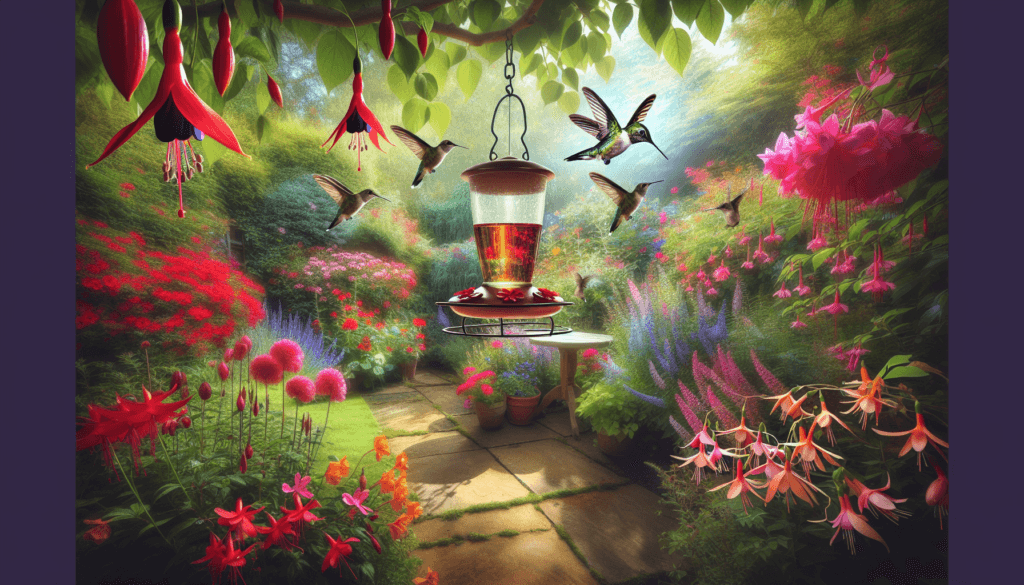
Attracting with Hummingbird Sounds
In addition to visual cues, you can use auditory stimuli to attract hummingbirds to your DIY garden. Playing recorded hummingbird sounds is one way to catch their attention and make them more likely to investigate your garden. You can find various recordings available online or create a loop of hummingbird vocalizations to entice them further.
Another sound-based technique is using wind chimes or musical instruments. The gentle tinkling or soft melodies produced by wind chimes or instruments like the flute can imitate the sounds hummingbirds make during courtship displays. These sounds can pique the curiosity of hummingbirds and encourage them to explore your garden for potential mates or territories.
Creating a tranquil garden ambience is another effective method for attracting hummingbirds. Just as humans enjoy peaceful outdoor spaces, hummingbirds appreciate calm and quiet surroundings. By minimizing noise pollution, such as loud machinery or traffic sounds, you create a serene atmosphere that hummingbirds find appealing. Let your garden be a haven where these enchanting birds can relax and feel at ease.
Observing Hummingbird Behavior
To deepen your connection with hummingbirds and learn more about their fascinating behavior, it is essential to observe them closely. Learning to spot hummingbird feeding patterns is a significant first step. Hummingbirds have incredibly fast metabolisms and need to feed frequently. By monitoring their visits to specific plants or feeders, you can gain insight into their preferred nectar sources and establish a better understanding of their feeding behavior.
Understanding hummingbird mating and nesting habits is another valuable aspect to observe. Although hummingbirds are known for their aerial displays, they also engage in courtship rituals that involve intricate flights and calls. By witnessing these displays, you can appreciate the natural beauty and complexity of their reproductive behaviors. Observing nesting habits, such as nest construction or young fledglings, allows you to witness the remarkable journey of new life in your garden.
Recording and analyzing hummingbird sightings can be a rewarding practice. Keep a log of your observations, noting the specific time and place of each sighting. Over time, these records will help you identify patterns, fluctuations in numbers, and the impact of changes in your garden or feeding methods. By studying your records, you can adapt your DIY garden to provide an even more welcoming environment for hummingbirds.
In conclusion, attracting hummingbirds to your DIY garden requires a thoughtful approach involving the right choice of plants, providing adequate nectar, strategic plant arrangements, adding water features, offering perches and shelter, avoiding harmful chemicals, maintaining a clean environment, creating a year-round habitat, attracting with hummingbird sounds, and observing their behavior. By following these comprehensive guidelines, you can establish a haven that not only attracts these enchanting birds but also contributes to their conservation and well-being. Start creating your hummingbird oasis today and enjoy the beauty and joy these delightful creatures bring to your garden.
